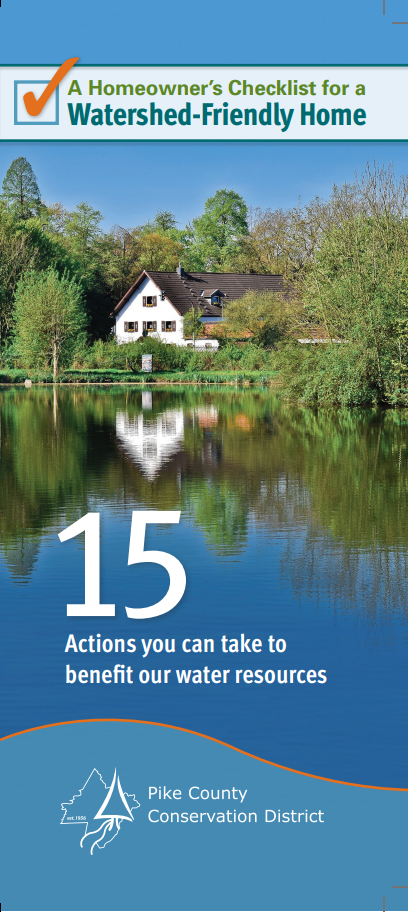
Homeowner’s Checklist for a Watershed-Friendly Home
Your everyday choices impact local water resources…
Small actions made in your own backyard can contribute to non-point source (NPS) pollution; pollution which originates from many scattered sources.
According to the PA Department of Environmental Protection, 75% of PA’s total water pollution is from non-point source pollutants. The action items on this list will not only reduce pollution but also increase the value of your home. This guide will help protect your investment in your property, by reducing flooding, beautifying property, and by protecting vital systems, such as septic. If each person does their part, we can protect our water resources for future generations.
The following list is organized into three categories of water resource conservation, identified by color:
Capture and Infiltrate
By capturing runoff on a pervious surface, it has time to infiltrate into the earth, filter out pollutants as it goes, and recharge groundwater.
Minimize Runoff
Reducing the amount of stormwater running off in the watershed, fewer non-point source pollutants can be picked up.
Eliminate Pollutants
Non-point source pollution can be stopped at its source if each homeowner knows what to do.
15 Actions You Can Take to Benefit Our Water Resources
Click on a number in the picture to learn about each item on the checklist. How watershed friendly is your home?
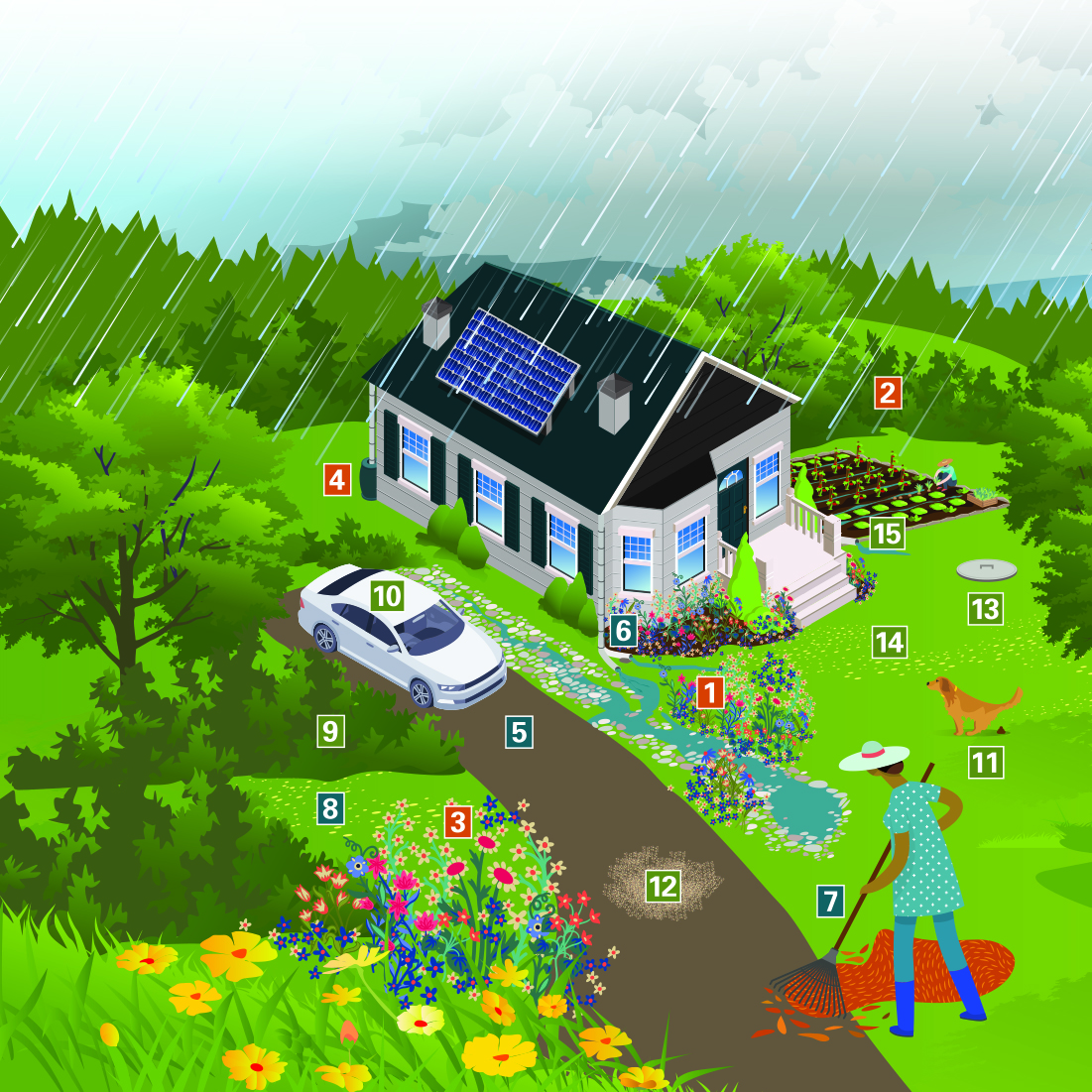
1. Plant a Rain Garden
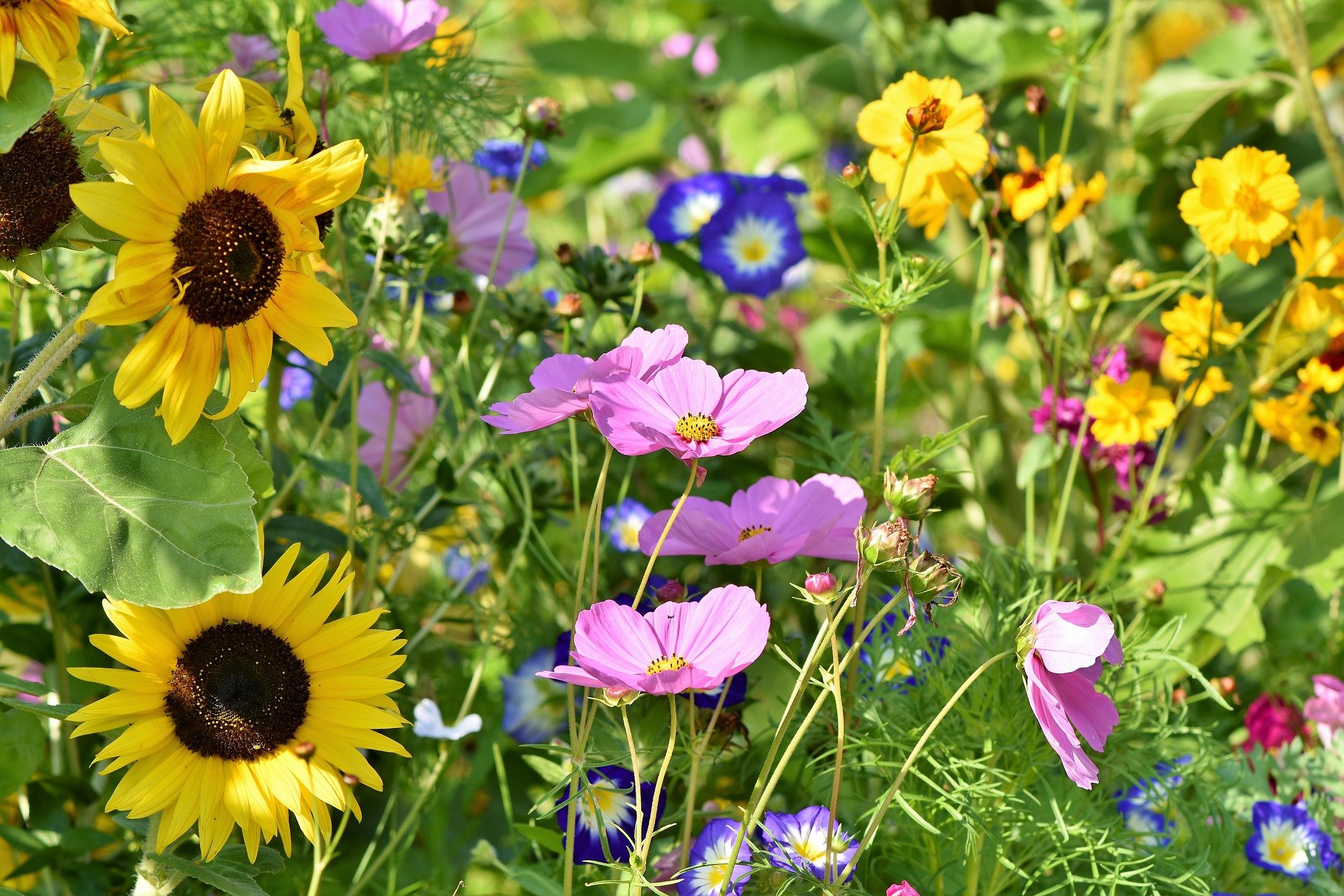
A depressed area in the landscape that collects water allows it to soak into the groundwater, rather than enter the storm sewer system. By directing gutters and down spouts into the garden, you can assist rain water from roofs (an impervious surface) infiltrate into the groundwater.
Choosing plants for your rain garden that take deeper roots helps to encourage the water to infiltrate through the soil.
A rain garden is the perfect place to plant native plants on your property (number 3). Native plants are best adapted to local conditions and are easy to maintain. This a wonderful way to support the local ecosystem.
A good garden, especially a rain garden starts with good soil. Learn about amending your soil here.
Find a guide to building a rain garden from scratch, here.
2. Install a Vegetative Buffer
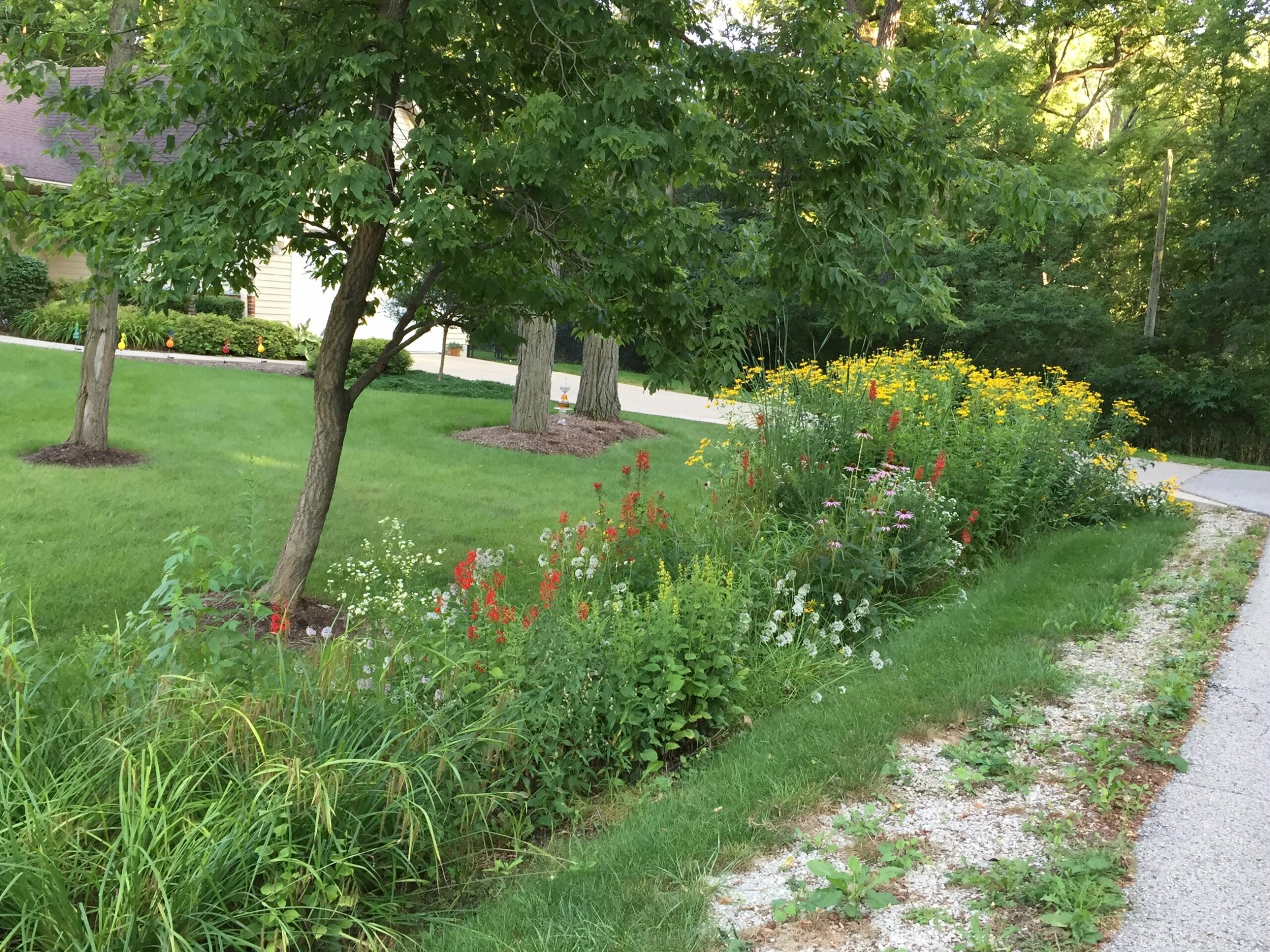
Install a buffer between your home and the edge of your property. These buffers are intended to intercept and slow runoff, providing increased infiltration for groundwater and decreased erosion.
Buffers have the capacity to remove up to 50% or more of nutrients and pesticides, up to 60% or more of certain pathogens, and up to 75% or more of sediment from stormwater runoff.
Buffers, like rain gardens, provide food, nesting cover and shelter for many wildlife and insect species. They can also reduce noise and odor from outside your property.
Good buffer plants are anything with roots, but preferably native species that are tolerant of wet conditions. Those with deeper root systems prevent soil erosion and encourage infiltration.
For more information on buffers, read our Buffer Basics article.
3. Plant Native Plants
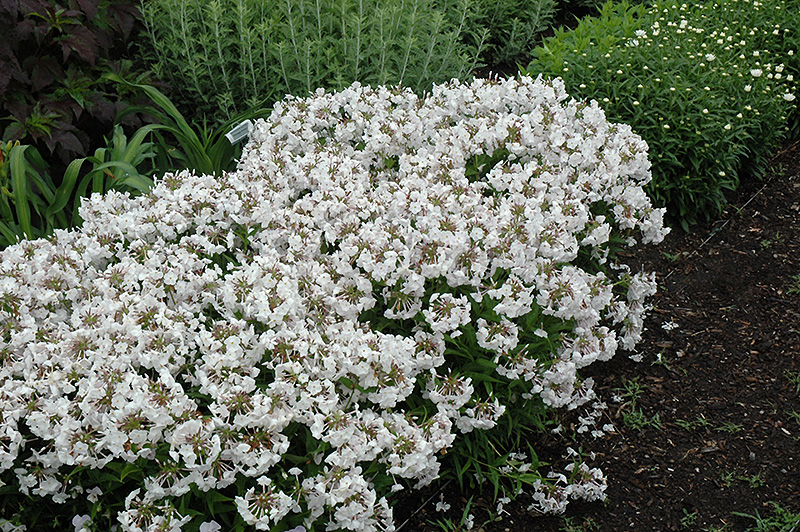
Native plants are species that occurred within a region before new plants were introduced by humans. There are approximately 2,100 native plants in Pennsylvania.
Choose native plants for landscaping--buying from nurseries, and not removing the species from the wild. This ensures that you are getting the correct plants and that you are not depleting or disrupting native populations.
Native plants support local pollinators and provide food for native bird species. Native species require fewer soil amendments and less maintenance. These species are adapted to local conditions and can establish heartier roots. Planting native plants not only benefits local pollinators and birds, but also other native species, making a stronger ecosystem overall.
For information on landscaping with native plants, click here >>
4. Install a Rain Barrel

Rain barrels and cisterns are a way to disconnect the downspout and save the stormwater for other uses.Rain barrels are typically connected to gutter downspouts and collect the runoff from roofs.
The benefits of using a rain barrel include conserving water and repurposing. The water can be used to water indoor and outdoor plants, to wash cars and outdoor furniture, and many other uses. Barrels also lower home water bills by reducing metered water usage.
To learn more about rain barrels, read our resource >>
To learn how to make your own DIY rain barrel, click here >>
5. Install Pervious Surfaces
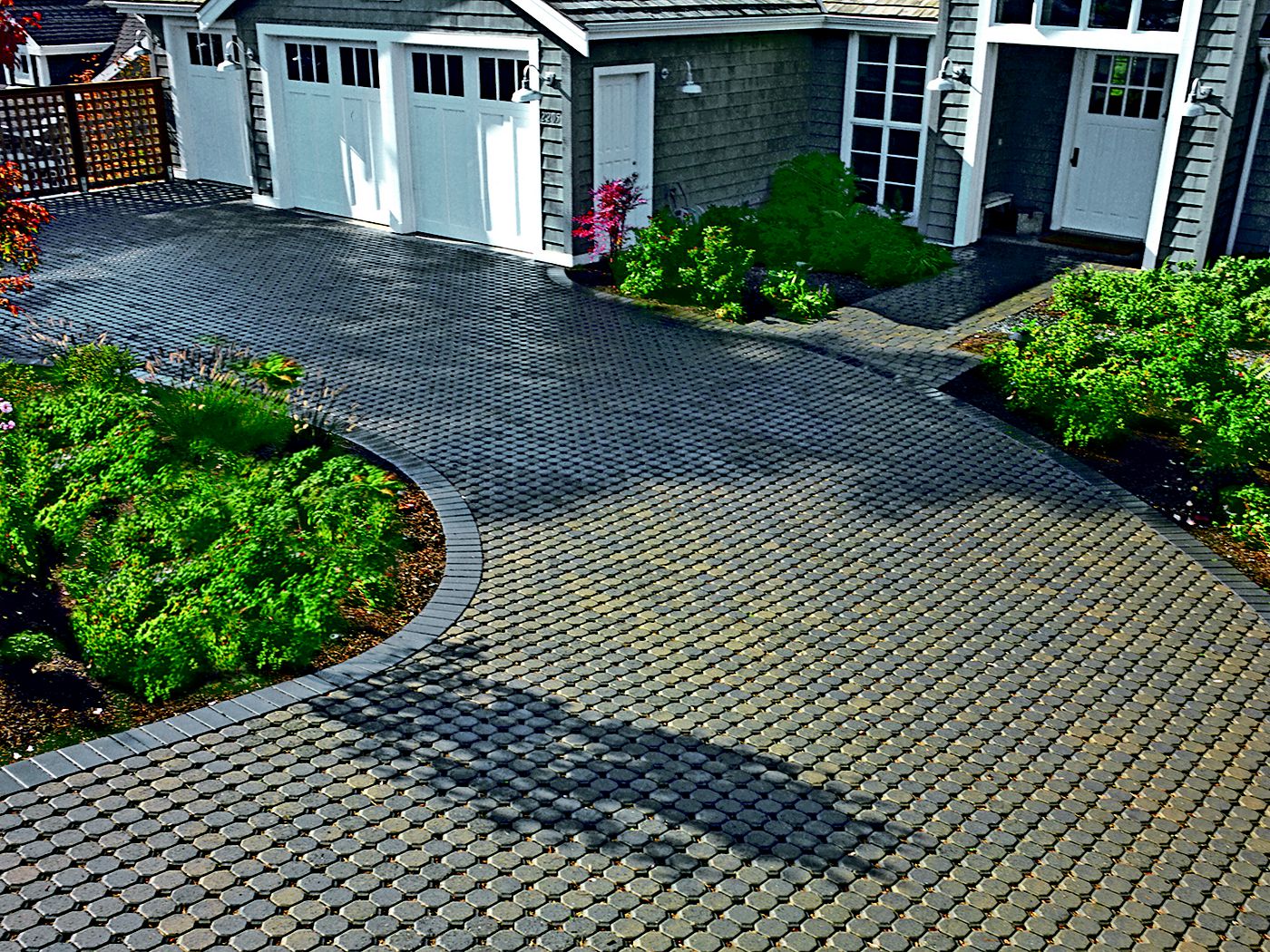
An impervious surface is a solid surface that does not allow water to penetrate, which forces the water to run off. Examples of impermeable surfaces are asphalt, concrete, traditional stone, brick or concrete pavers. Pervious surfaces (also called porous or permeable surfaces) allow water to percolate into the soil and can filter out pollutants as it recharges the water table. Some examples of permeable surfaces are permeable pavers, turf, planting beds, and mulched beds.
Instead of using impervious surfaces to pave your driveway or walkways, using permeable surfaces increases the infiltration of stormwater and reduces surface runoff. This can prevent flooding and erosion and sediment pollution.
For more information on impervious surfaces, click here >>
6. Direct Downspouts Away
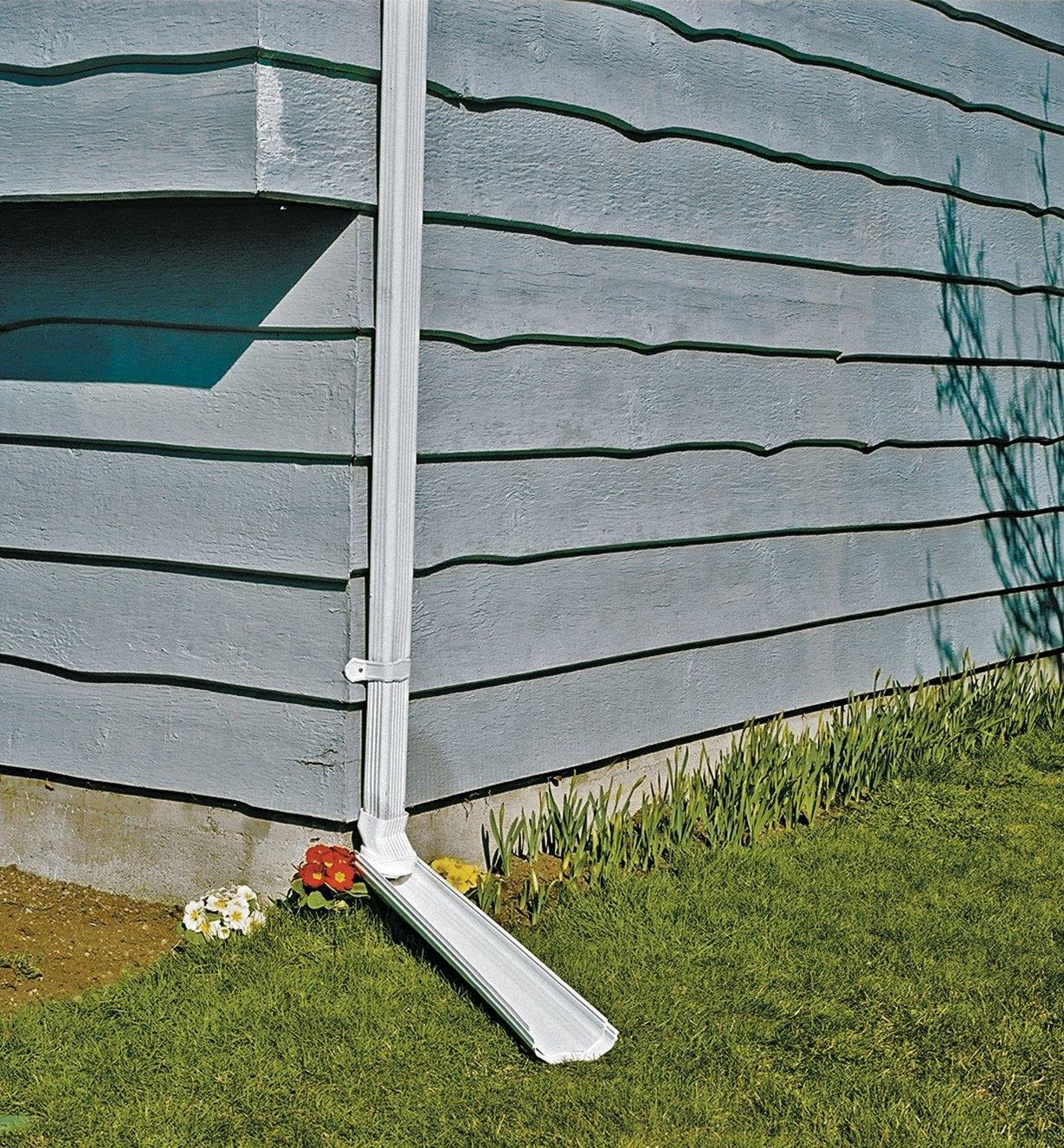
Direct your downspouts further into your lawn or garden, forcing the water coming off of your roof (an impervious surface) onto a permeable surface (your lawn).
Do not direct your downspout onto your walkways or driveways, as it simply moves the stormwater from one impervious surface (your roof) onto another (your driveway). This does nothing to disconnect the stormwater from run off nor to reduce erosion and sediment pollution.
The best place to direct downspouts is into a rain barrel, rain garden or buffer. Using the stormwater to water plants, or for other purposes is the best way to make use of this resource.
7. Clean Up Fallen Leaves
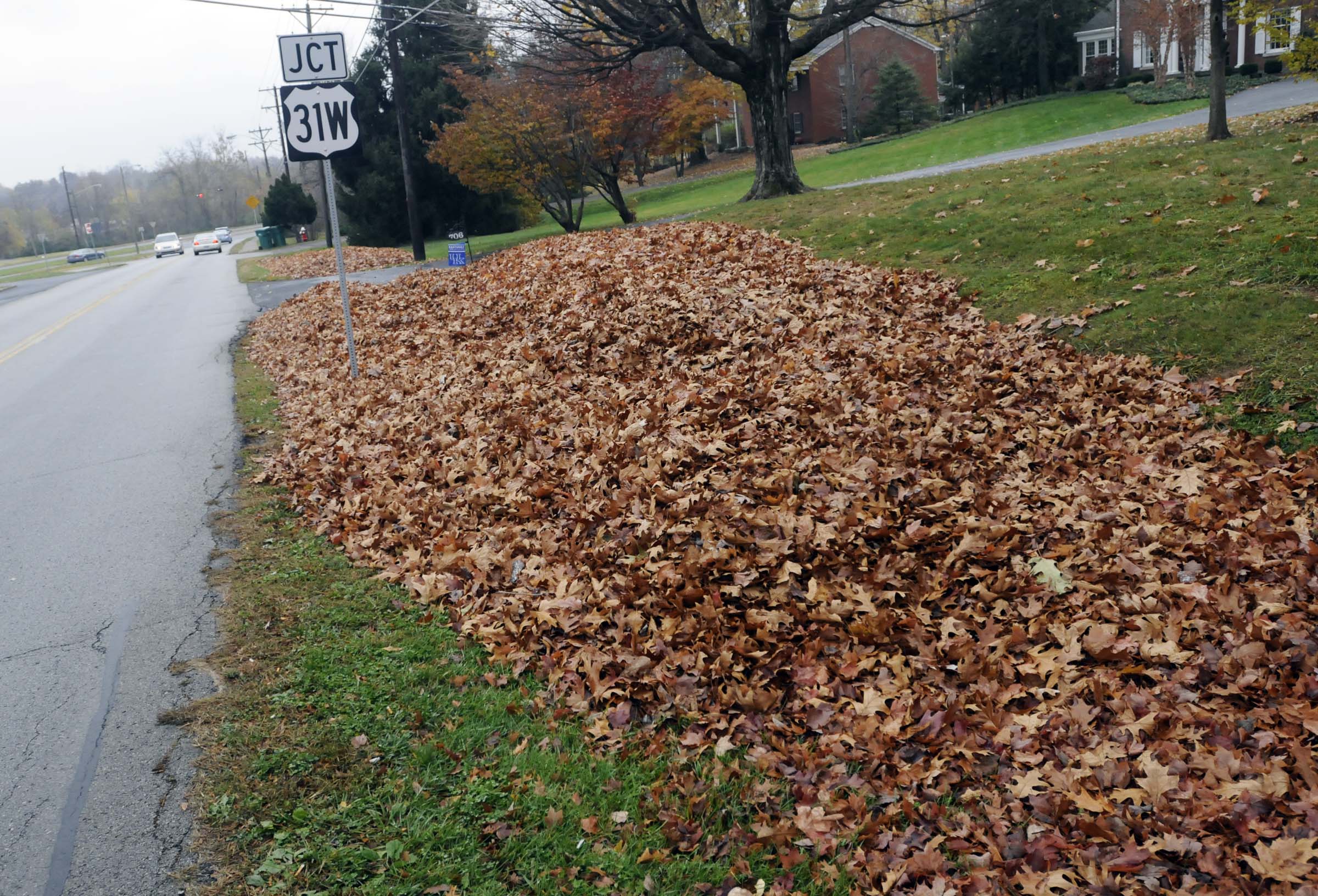
Keep fallen leaves out of the ditches and street gutters, to allow stormwater to flow freely. Allowing leaves to back up can cause flooding and over time will fill in the gutter or ditch, making it ineffective. Leaves should not be raked into waterways, such as lakes, streams or wetlands. This can cause excess nutrients in the water, leading to algae blooms and vegetation growth. Leaves should also not be blown into roadways where they will eventually clog storm drains.
Fallen leaves should be viewed as an abundant resource that comes in piles every year. Leaves are the primary component in rich soil that forms on the forest floor, and help to add nutrients to the soil. Leaves in the soil also increase the air and water movement. These are things that a garden can never have too much of.
For more ideas of what to do with the fallen leaves in your yard, such as mulching or composting, read our Autumn Gold article.
8. Limit Lawn Size
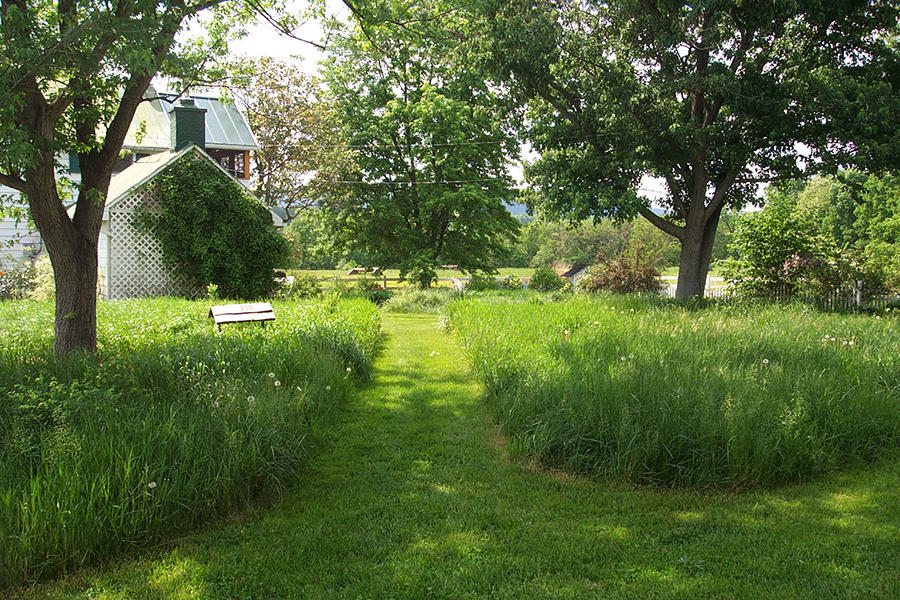
Limit the size of your mowed, short grass area of your lawn. By leaving parts of your property and lawn natural, you can increase the amount of stormwater on your property infiltrating into the groundwater. Taller plants, with deeper roots and varied species, hold water and slow down the run off. The more complex root system can help to filter the water it is infiltrating, reducing the amount of non-point source pollution coming from your property. A small lawn also has the benefit of lower maintenance and less mowing, saving you money, time and emissions.
Leaving natural areas on your property can also provide food, habitat, and resources for native species. This will boost the local ecosystem, and not only provide water filtration and infiltration, but benefits to pollinators and birds as well.
For information on conservation design, click here >>
9. Plant Trees, Shrubs, and Groundcovers

On your property, plant trees, shrubs, and groundcovers (such as grass, creeping thyme, etc). These types of plants are very good for preventing soil erosion, due to their deeper root system (as you can see in the image above). Erosion leads to sediment pollution in our watersheds.
Sediment pollution can cause major problems, such as increased waterway flooding due to sediment clogging the waterway. The water becomes cloudy and brown with sediment pollution, which prevents light from reaching the aquatic plants, and aquatic animals cannot see in this muddy water, so it disrupts the entire aquatic food chain.
Read more about the PCCD Erosion Control Program here >>
For more information on root depth and erosion control plants, click here >>
10. Maintain Cars
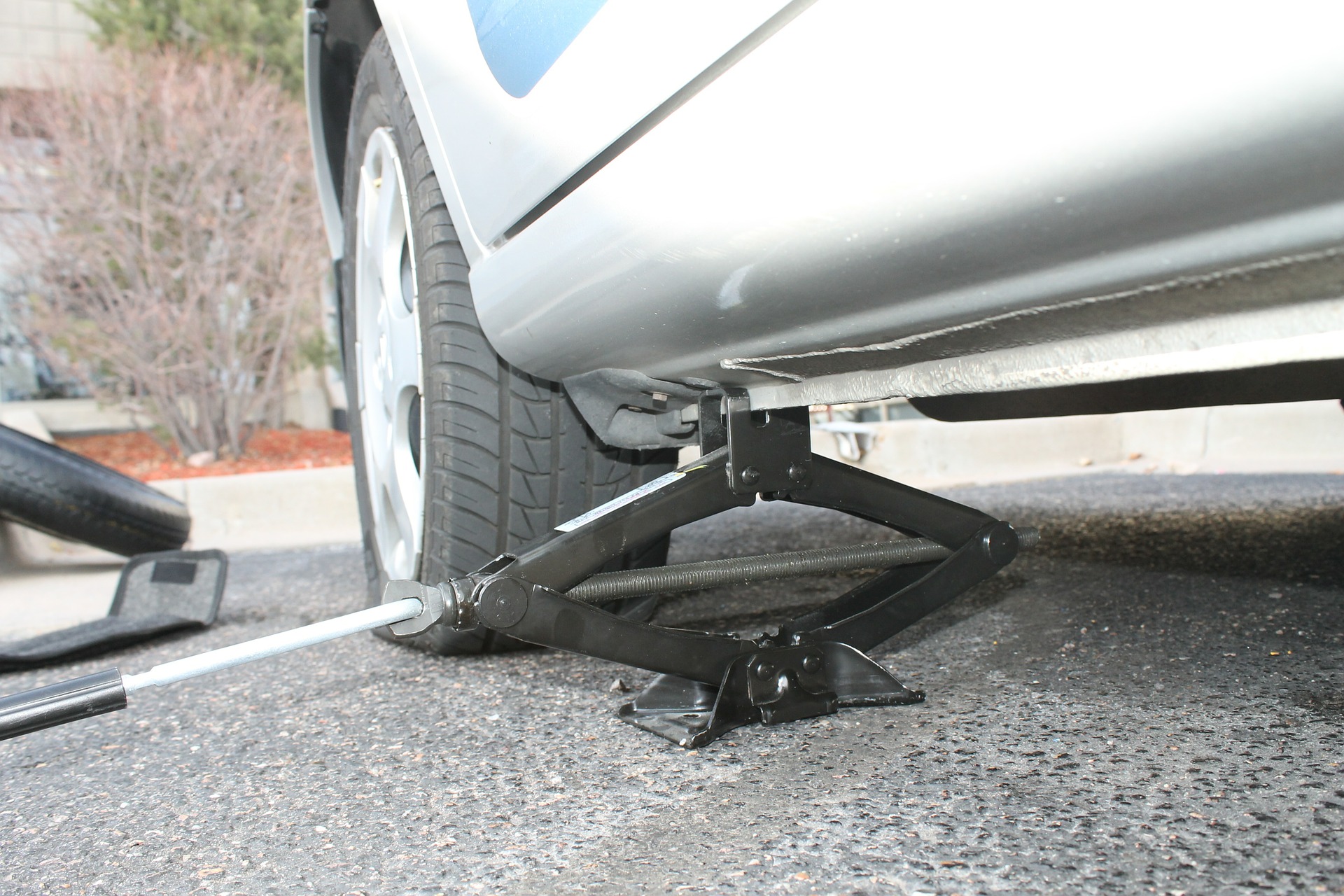
Keep your car properly maintained. Stop any drips or leaks, from oil changes, wiper fluid, gasoline, etc., as soon as possible. Having those chemicals drip onto the ground make them available to be picked up by stormwater runoff which can carry the chemicals all the way to local waterways.
For information on caring for your vehicle, click here >>
Motor oil and antifreeze can be recycled, and more importantly, should never be poured down a sink drain or sewer drain. Often this leads straight to local waterways anyway. Recycling centers, auto repair shops or gas stations may take your used chemicals, check with your local borough for information.
For more information on what to do with your used motor oil, click here >>
Also, when washing your car, go to a commercial car wash. Most commercial car washes recycle their water and some even use environmentally friendly chemicals.
11. Clean Up Pet Waste
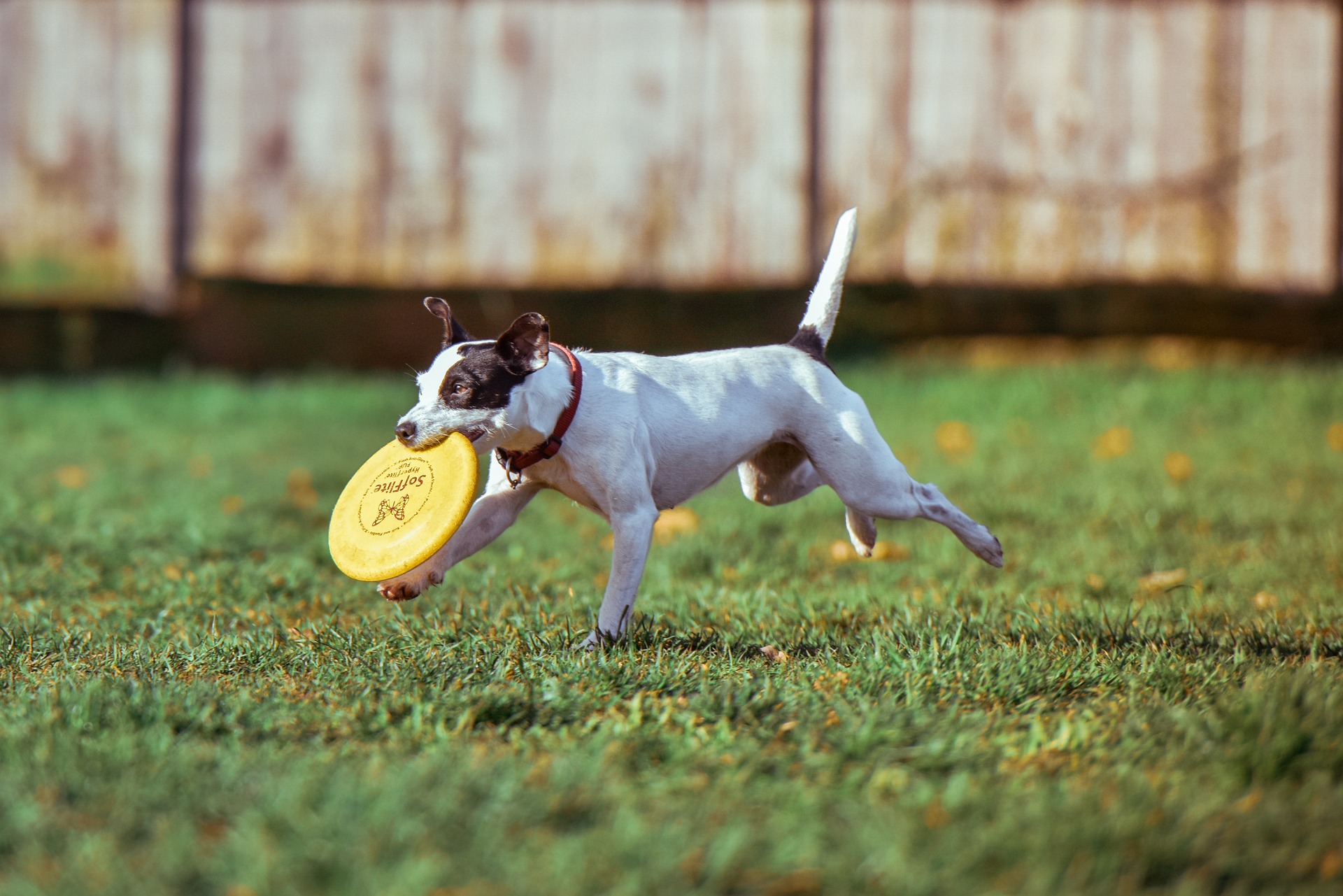
Pets are not part of the wildlife ecosystem, therefore their waste cannot be excused as comparable to that of the deer or other wildlife. Pets often leave waste in higher density, closer to stormwater runoff pathways, and are not consuming wild food sources that would otherwise break down naturally.
When pet waste is washed into lakes or streams the waste decays, using up oxygen and sometimes releasing ammonia. Low oxygen levels and ammonia combined with warm temperatures can kill fish.
Pet waste also contains nutrients that encourage weed and algae growth. Overly fertile water becomes cloudy and green – unattractive for swimming, boating and fishing. Prevent your pet or farm animals from leaving waste within 100 foot radius of your drinking water well or spring as it my contaminate your water source.
For more information on pet waste and water quality, click here >>
12. Don't Salt Driveway
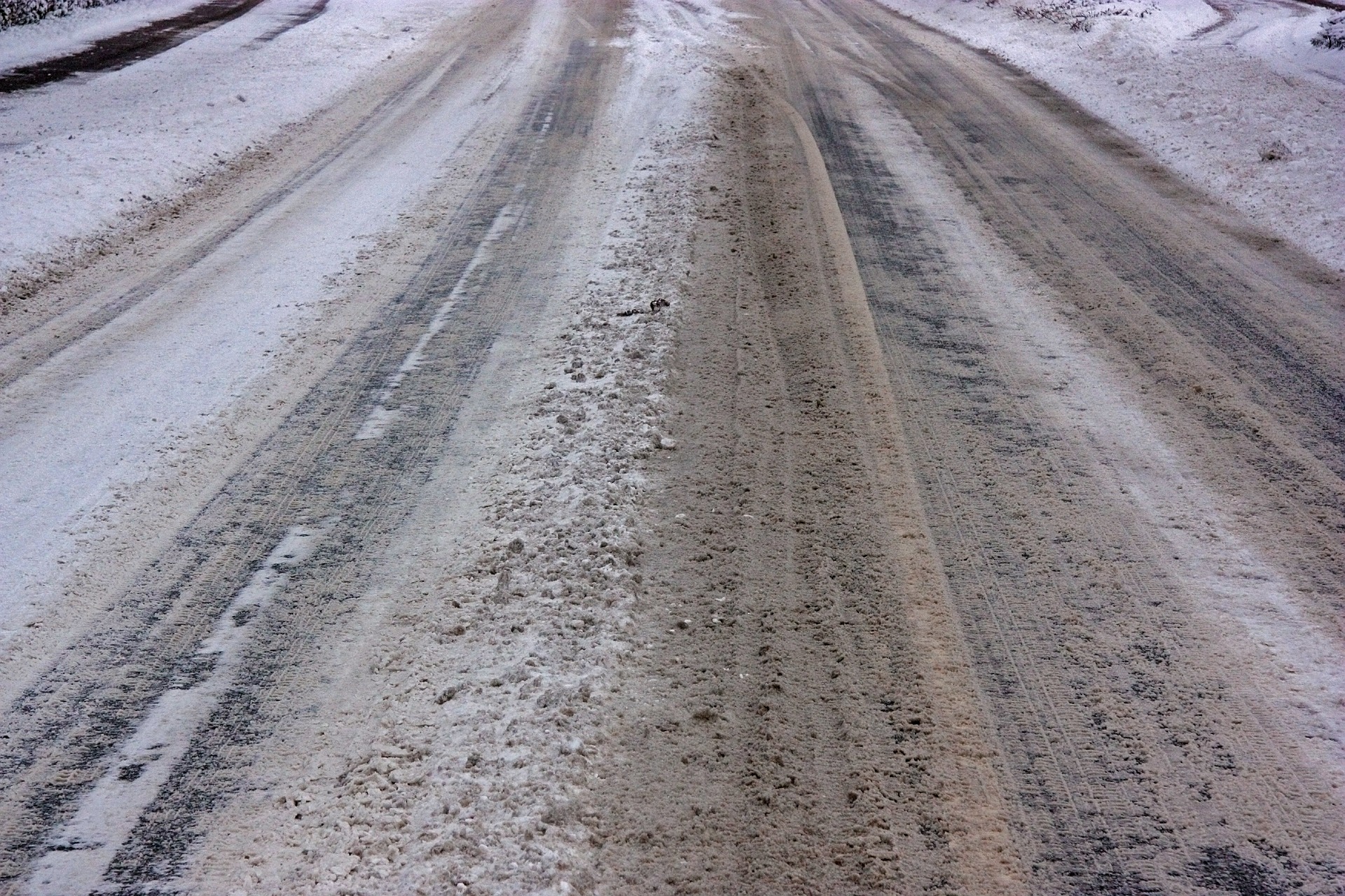
Instead of using salt, use sand, chip, plowing/shoveling or brining the ice to clear the surface. If you must use salts, only apply at the temperature range in which they are effective (it will say right on the product), and use a spreader. Salt can be applied in excess quantities if not applied correctly.
Road and sidewalk salt is often used liberally in Pike County in the winter and can have effects that last beyond the winter season. This can affect the taste of drinking water, be harmful to people with certain health conditions, cause corrosion of infrastructure, and be harmful to aquatic life.
Once salt enters our water systems, it doesn't go away. As salts enter groundwater via surface runoff, they are building up. It then leaches into our streams and private wells, which is a serious concern for Pike County residents relying on private water wells for their drinking water source. Salts (particularly their cations) are an emerging contaminant of priority concern worldwide as new research is showing increased harmful effects.
Fun Fact: 15 million metric tons of road salt have been used in the U.S. since 1940.
13. Maintain Septic System
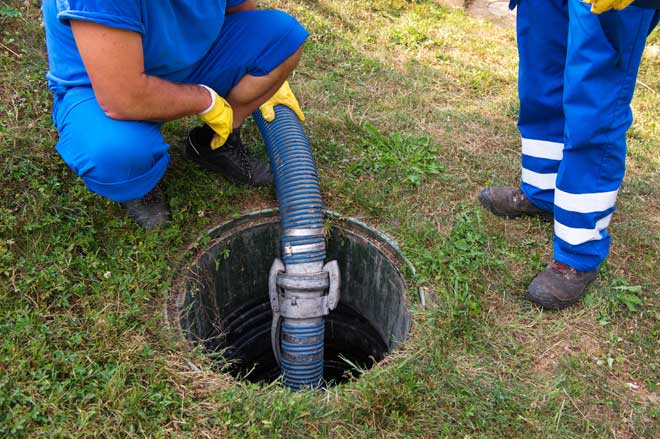
Properly maintain you septic system. Pollution from septic leaks can cause not just environmental issues but also dangers to human health. Human septic getting into waterways can cause dangerous nutrient and bacteria levels that can cause a waterway to be closed for human activities.
At the least, it is recommended that you have your system pumped and inspected at least every three years, if you have an average sized home.
You can learn more about septic maintenance and water quality by listening to the Septic Episode of The Conservation Cast
To read our septic maintenance article, click here >>
For more information on caring for your home septic system, click here >>
14. Use Chemicals Properly

Always read and properly use lawn and garden chemicals. Excess use can result in the chemicals being collected in runoff and joining our water sources.
When you apply chemicals is also important. Be sure to check the weather and do not apply before a heavy rain. Chemicals may take several days to soak into you lawn before they are no longer a risk of washing away.
Choose less harmful or organic options when possible. Never apply chemicals within a 100 foot radius of your drinking water well or spring as you may contaminate you water source.
15. Use Water Wisely
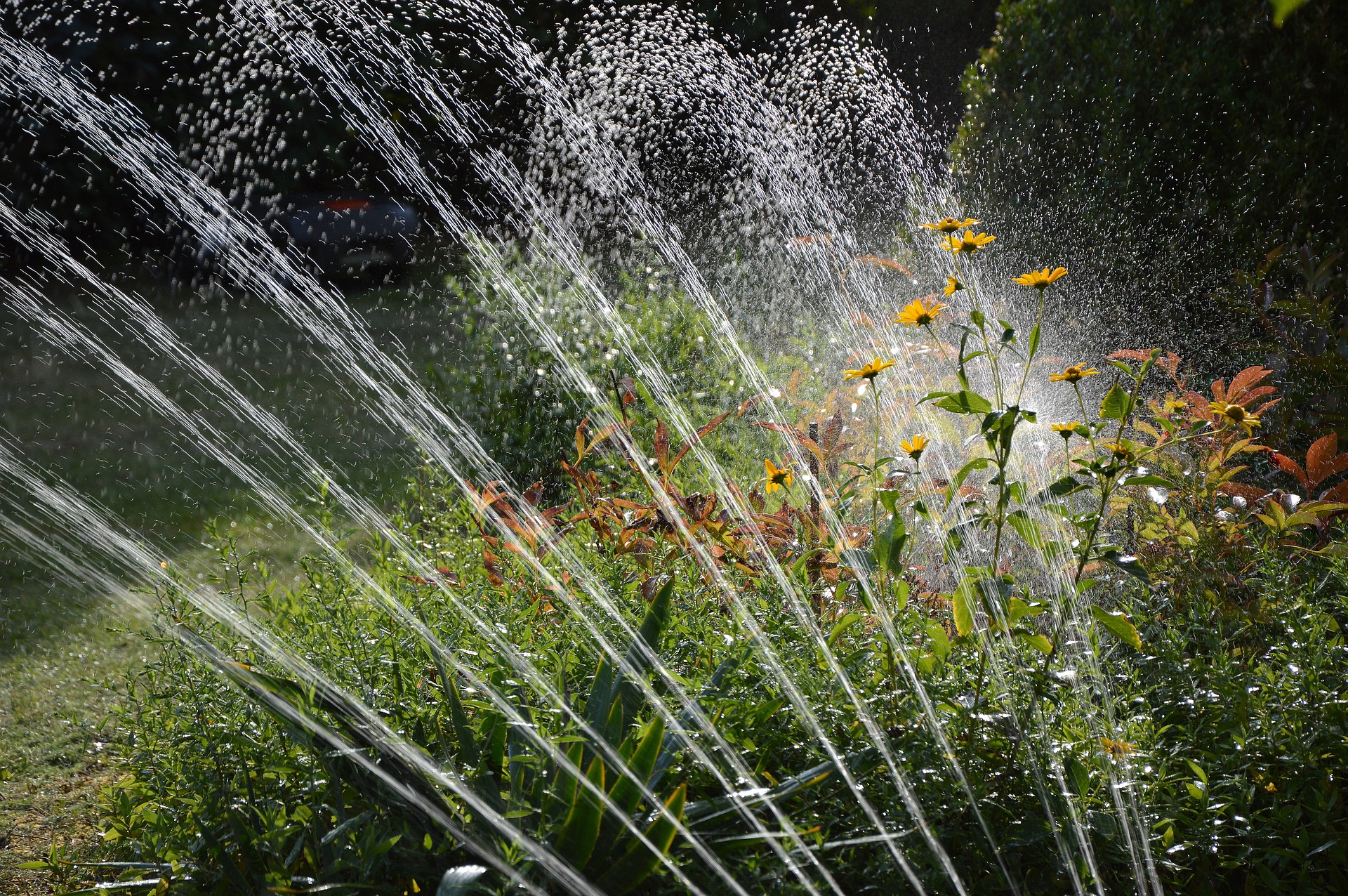
When watering your lawn and garden, use water wisely. Water your lawn deeply 2-3 times a week instead of every day. Watering early in the morning is better than mid day, to prevent excess evaporation.
Drip irragation conserves water by pinpointing usage. Also, try planting Xeriscape plants, which are those that can tolerate dry conditions, with minimal need to water.
For more resources and handouts on conserving water in your home, as well as out:
Download an easy-to-print version of this checklist »
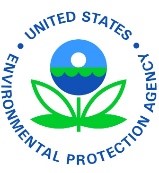
Financial and other support for this project is provided by the Pennsylvania Association of Conservation Districts, Inc. through a grant from the Pennsylvania Department of Environmental Protection under Section 319 of the Clean Water Act, administered by the U.S. Environmental Protection Agency.

Invasive species cost the US over 120 billion dollars each year. These species impact tourism, transportation, resource use, water withdrawals and much more.
Never move animals or plants from one area to another. Don’t move firewood, soil, or other items that might contain insects or microbes.

